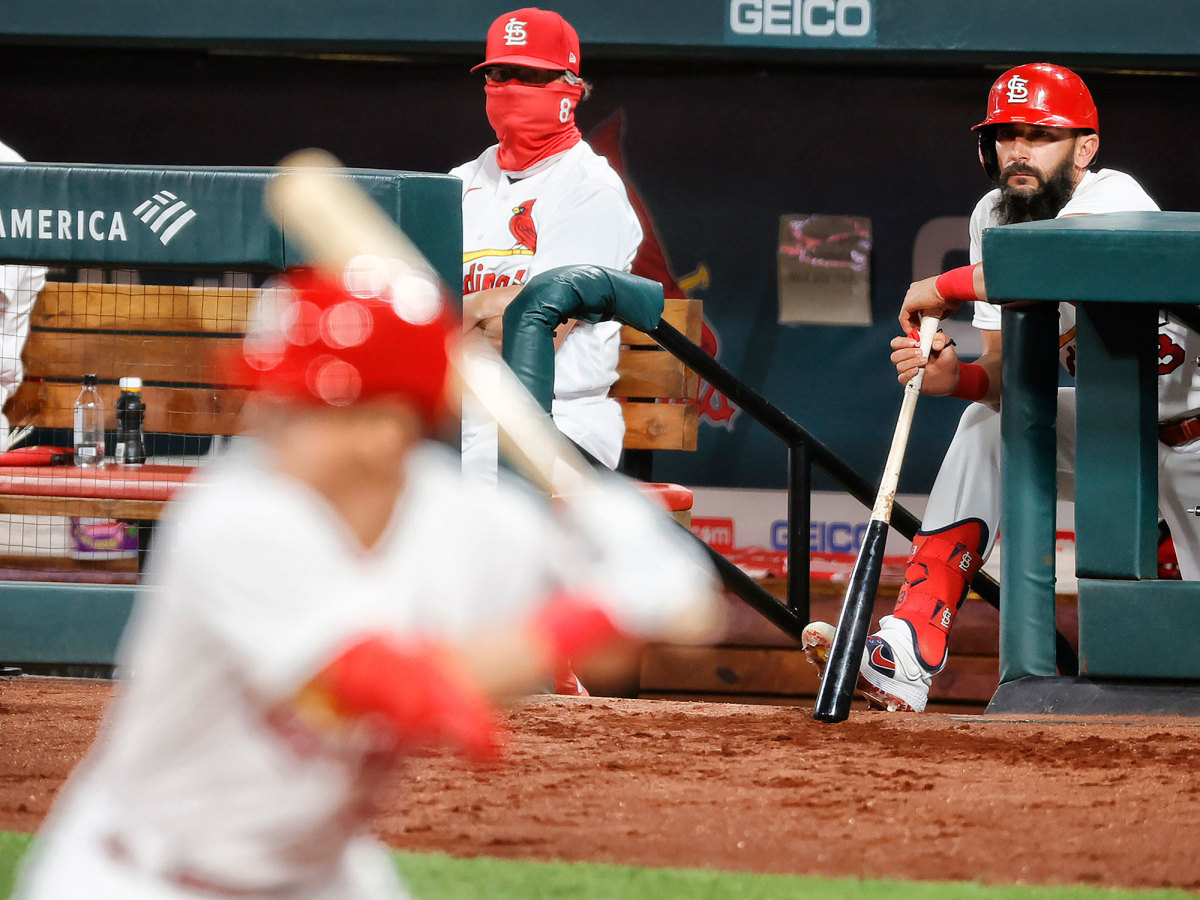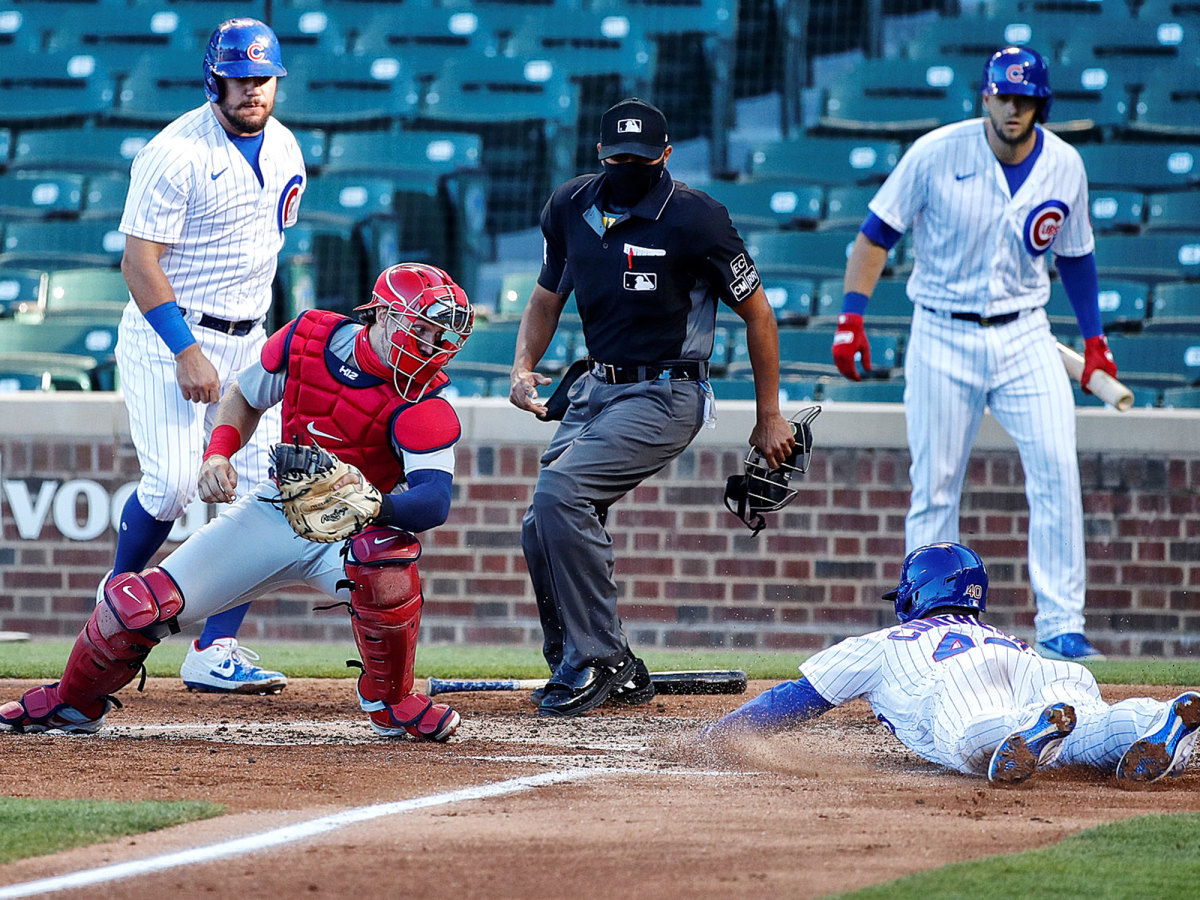Is the NL Central Really the Cardinals' to Lose?
Two weeks ago the Cardinals traded for Nolan Arenado and became the supposed favorites to win the NL Central.
Surely their roster still had holes, but the hype of the heist was enough for St. Louis to garner universal acclaim from the critics. The best third baseman in baseball, rescued from the aimless Rockies, content to spend the rest of his playing days with a perennial contender. That narrative was too good to resist.
Except it was also too good to be true, at least in what it means for the Cardinals this year. The PECOTA projections, which Baseball Prospectus released earlier this week, have the Cardinals finishing behind the Cubs and Brewers with an 80–82 record, while FanGraphs projects the Cardinals to tie with the Brewers for first place in the division—with a losing record (79–83).
The first thing to know about PECOTA and other projections is they are strictly based on performance data. They do not account for how much weight a player has lost or put on over the offseason, and they do not consider prospect rankings. They rely on players' previous performances, but they do not depend on how well a team did in years past, a point Mike Petriello of MLB.com details in regard to the Braves’ underwhelming 2021 projections.
“PECOTA is looking at the numbers, it’s not looking at the narrative of a first-round pick or the scouting reports or things like that,” says Craig Goldstein, the editor in chief of Baseball Prospectus. “If they just told us what they already thought, they wouldn’t be very meaningful.”
The Cardinals’ greatest strength over the past few years has been their pitching and defense, so it was surprising to see PECOTA project them to allow 763 runs, which would be their most since 2007—the last time they finished below .500. They return mostly the same rotation from the last two years, with starter Miles Mikolas back after missing 2020 with an injury and without Dakota Hudson, who had Tommy John surgery in late September.

With the exception of ace Jack Flaherty, PECOTA expects a regression from the St. Louis starters because they don’t miss enough bats. How successful a pitcher can be without inducing swings and misses depends on the quality of contact he allows, the skill of his defense and the ballpark in which he’s pitching.
For example, lefty Kwang Hyun Kim had an impressive 1.62 ERA over 39 innings last season—his first in the majors after years playing in Korea—but he is more reliant on pitching to contact. Fielding Independent Pitching (FIP) measures what a pitcher’s run prevention would be without factoring in his defense, and generally it can be a better gauge of a pitcher’s talents than ERA, which is dependent on the defense behind him. Kim’s 3.88 FIP is significantly higher than his ERA, and it represents a trend for the Cardinals. Credit to their defense, but no starting staff over the past two years has outperformed its FIP as much as theirs.
Meanwhile, the Brewers have two elite swing-and-miss starters atop their rotation in Brandon Woodruff and Corbin Burnes, and a group of solid arms behind them. Their starting staff, along with a bullpen that includes Josh Hader and Devin Williams, is the biggest reason for their projected first-place finish.
“I spent a lot of time looking at Milwaukee because before we published, I was like, ‘That’s too high.’ Frankly, I earnestly think [the Brewers' projected win total] is too high anyway,” Goldstein says. “Brandon Woodruff, by the numbers, he’s an ace. He strikes out 37% of batters. A projection system, especially one like PECOTA, adores that.”
Cardinals starters could just be good at generating soft contact, which could make their pitching better than the projections suggest. Even after losing second baseman Kolten Wong, who’s won consecutive Gold Gloves, in free agency, St. Louis has one of the best defenses in baseball. Adding Arenado could only help a pitching staff that doesn’t get as many strikeouts.
As I wrote the morning after the Arenado deal was reported, “The only team awake in a hibernating division, the Cardinals have added the impact bat they’ve so desperately needed over the past five years.”
St. Louis has been a below-average offense in recent seasons, and Arenado should certainly boost the lineup this year. But that doesn’t necessarily mean the Cardinals will be a good offensive team.
Seven Cardinals position players are projected to be at least league-average hitters, per PECOTA, but two of those seven (John Nogowski and Austin Dean) are not expected to see regular at-bats. Using Baseball Prospectus’ DRC+ (deserved runs created) metric, which measures offensive value like OPS+ and WRC+, only Arenado, Paul Goldschmidt and Nogowski are projected to be at least 5% better than league average, with Arenado (136 DRC+) and Goldschmidt (134) as their only great offensive players.
While the Cubs are certainly in transition, they still have a strong group of hitters that make them appealing to PECOTA. Many of their players had down offensive seasons in 2020, but their otherwise productive careers give PECOTA confidence those players will return to form. Eight of their regular position players are projected to be better than league average this season, with usual suspects Anthony Rizzo, Kris Bryant, Willson Contreras and Ian Happ all expected to be among the National League’s better hitters. Joc Pederson, whom they signed this offseason, is projected to be 23% above average this year, facing mostly right-handed pitching.

With these players still in Chicago (for now, anyway), the Cubs are projected to have enough offense to overcome some of their pitching problems.
The Cardinals are expecting major contributions from switch-hitting outfielder Dylan Carlson, their most promising young position player since the late Oscar Taveras. However, PECOTA is not as high on Carlson. His .218/.288/.379 projected slash line is not the production of an impact hitter.
Carlson’s rough projections are a product of his struggles last season, his first in the majors, when he hit .200 with a .616 OPS in 35 games. That’s a small sample to draw conclusions from, but PECOTA factors in a player’s minor-league performances. Carlson had a strong 2019 campaign in the minors but was less than stellar in previous years.
“We all put narratives together. That’s natural. I’m a huge Dylan Carlson fan, in terms of him being good,” Goldstein says. “I’ve been watching him for a while. We know he’s a first-round pick, so there’s pedigree there. We’ve heard about the tools, even when he wasn’t putting up big numbers. And then 2019 happens and it confirms what we all thought.”
There were signs of life late last year from Carlson. His initial stint in the big leagues was a disaster, so the Cardinals optioned him to the alternate site in early September. At the time he was hitting .162 with a .458 OPS. He returned two weeks later and took off, posting a .278/.325/.611 slash line over his final 12 regular-season games.
So impressive was Carlson (and underwhelming was the St. Louis offense) that manager Mike Shildt batted him cleanup in the wild-card series against the Padres. He went 3-for-9 and walked four times.
“He’s good at pretty much everything he does, and he’s only going to continue to get better,” Shildt said in December. “He plays nice defense and he’s got some nice pop in his bat. Probably going to add some as he gets more mature physically and figures out what the big leagues look like."
It wouldn’t be surprising if Carlson significantly outperformed the projections this season. If he did so, the Cardinals would have an improved offense to go along with a pitching staff that has proved it can be among the best in the NL without missing a ton of bats. Factor in the impact of Arenado as both a run producer and run preventer, and their case to win the NL Central looks more like what we expected after the Friday Night Heist.
The PECOTA projections did not so much dismantle our notion of the Cardinals being a playoff-caliber team after trading for Arenado. Instead they gave us another lens through which to evaluate this imperfect team in the National League’s worst division.
